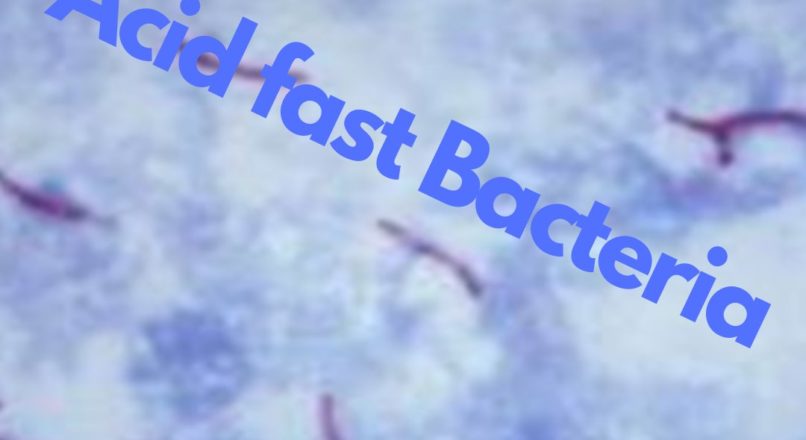
Acid fast Bacteria
Acid-fast bacteria are those bacteria that have mycolic acid in their cell wall. These bacteria stain acid-fast positive. This bacterium was first discovered by Ziehl–Neelsen that’s why the staining is also named by the scientist i.e Ziehl–Neelsen staining.
Examples:
Mycobacterium tuberculosis.
So in our article, we’ll consider this as a reference to define Acid Fast Bacteria.
Properties of acid-fast bacteria:
These bacteria are strict aerobes, acid-fast positive, rod-shaped bacilli. Their cell wall is composed of a very thick layer of wax and lipid called mycolic acid. It is a very slow growing bacterium. It takes 14-21 days to form a colony. These bacteria did not uptake gram stain. They remain colourless when these bacteria are stain with gram stain.
Why these bacteria are acid fast:
These bacteria have a thick mycolic acid layer around their cell wall. Mycolic acid is a thick lipid membrane. The mycolic acid doesn’t allow gram stain to penetrate and stain the cell wall.
The procedure of acid-fast staining:
First, bacteria are stained with Carbol fuchsin. Primary dye penetrates in the mycolic acid. Carbol fuchsin gives bacteria pink colour. When acid alcohol is added, the extra stain is washed out. Only acid-fast bacteria remain coloured. When secondary dye methylene blue is added, non-acid fast bacteria uptake the secondary dye. Then, this is observed under 100X microscope.
Habitat:
It is present in soil and air.
Diseases caused by acid-fast bacteria:
Acid-fast bacteria cause tuberculosis in humans and also in the animal. It is a zoonotic disease. It causes severe illness in poor people. It produces disease of the respiratory tract as it is an aerobic bacterium. Pathogenicity of this bacterium includes the presence of thick lipid layer around the cell wall that suppresses the immune system of the host. It is a slow-growing bacterium so the immune system didn’t recognize the division of bacteria. It forms the caseinous tubercle in the lungs. These tubercles burst and release bacteria in surroundings. This tubercle may travel from one place to another and produce tuberculosis of the bone.
Diagnosis:
They are fastidious bacteria. These bacteria can’t grow on simple media. For the culturing, LJ media is present to grow.
But rapid diagnostic tools are also present to diagnose this disease. Chest X-ray is used to detect the presence of tubercle formation in the lungs. PCR can be used to diagnose this disease.
Treatment:
There is an issue to treat disease caused by this bacterium. Mycobacterium tuberculosis is now a pan-drug resistant bacterium. There is no line of defence to treat this disease.
